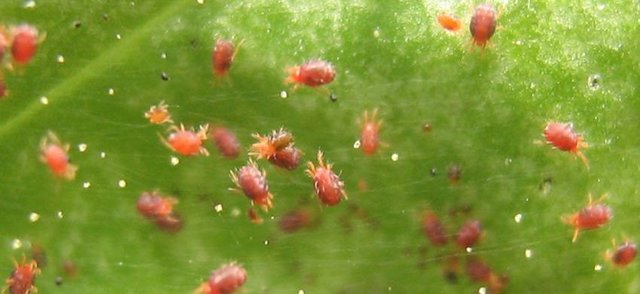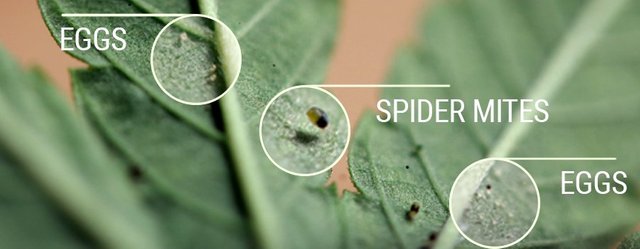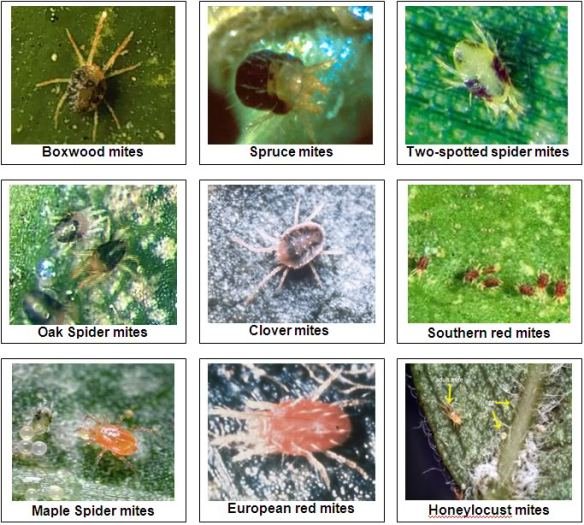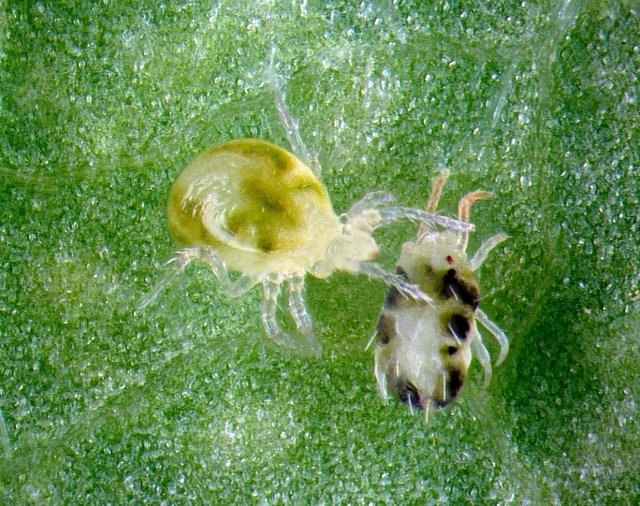THE CULTIVATION MITES
Mites are small family insects of the Arthropod type Tetraníquidos and Eriófidos. The mites measure 0.5 mm in diameter and usually feed on the lower part of the leaves, in the tissues near the rib. There are several species of mites and typically have a short life cycle, from seven to eight days. The eggs are attached to the cobwebs produced by adults, and during the nymphal stages, they have three pairs of legs, similar to those of an insect.

Source
Use a hand-held magnifying glass to study directly the infested parts and check the number of living individuals per leaf where possible, in order to measure the pressure of the mite population on its culture. In an outbreak of the pest, mites can easily exceed 40 individuals per leaf in vegetable crops.
LIFE CYCLE OF THE MITES
Mites have four stages in their life cycle: eggs, larva, nymph and adult. Adult females lay five eggs a day in a period of eight to 13 days and then die; while adult males can live for five to nine days.
The eggs are colorless, transparent and elliptical. The eggs are incubated in two or three days, after which the larvae emerge to feed.
The larvae move very slowly and do not disperse too far. After two or three days, they enter their stage of larval stillness. The females in a still state become attractive to the males, which carry them and carry them towards the new foliage. Female mites are about 0.2 mm long and have an oval contour. Their bodies have a swollen profile, from pale yellow to amber or green. The males are smaller and move faster.

Source
Durante el invierno los ácaros adultos se albergan en los rastrojos de la cosecha y en las plantas silvestres. Esta plaga típicamente se alimenta de cultivos tales como tomates, berenjenas, calabacitas, pepinos, moras y otras hortalizas.
TYPES OF MITES

Source
HANDLING AND CONTROL OF MITES
Abamectin: It is a substance derived from nature that serves as a good rescue insecticide. Depending on the brand of the product, it is not recommended more than two sequential applications in the tomatoes, thus preventing the development of resistance to the product. The post-harvest interval in tomatoes is seven days.
Bifenazate: It is a contact poison against two-spotted mites, with less toxicity for predatory mites and beneficial arthropods. It is not recommended to make more than one bifenazate application per season. The postharvest interval in tomatoes is three days.
Spiromesifen and fenpyroximate: They are slow-contact contact poisons. These products can take up to four days to activate after the application, and can take up to two applications to control mite outbreaks. According to reports, it is believed that fenpyroximate provides faster control of mites (two days). Depending on the crop, spiromesifen has a residual action of up to three weeks if it is applied before the outbreak. Both products need to be applied thoroughly on the surface of the leaves.
BIOLOGIC CONTROL
Nowadays, producers have new tools for handling insects, mites and diseases that have become almost impossible to control through the use of pesticides. Biological controls such as the release of insects and mites along with biopesticides made from specialized fungi and bacteria provide a new arsenal of weapons that producers can use.
Predators:

Source
Dear friend, you do not appear to be following @wafrica. Follow @wafrica to get a valuable upvote on your quality post!